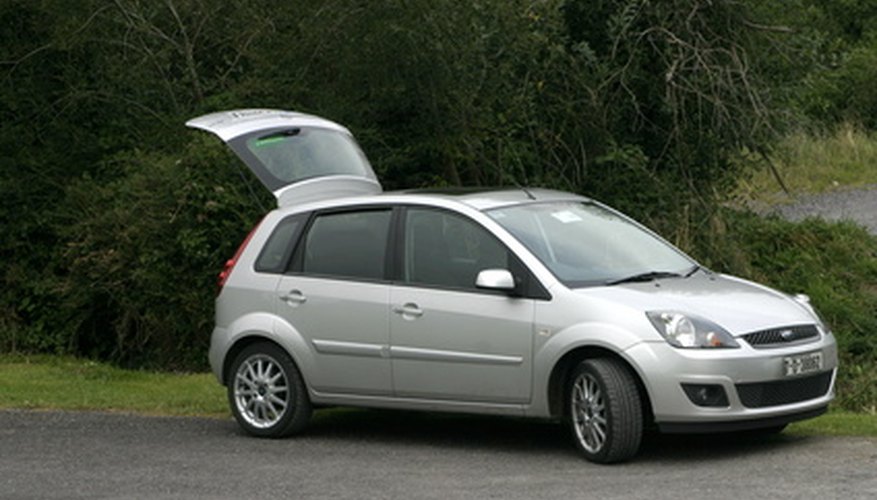Hydraulic clutch systems are a large improvement over the older mechanical systems. Even with normal wear and tear, mechanical systems require routine maintenance and adjustments to the cable and linkage system.
Generally, hydraulic clutch systems only need to be serviced when a clutch component has been repaired or replaced. Bleeding the hydraulic clutch system on a Ford requires only common tools and general automotive repair knowledge.
- Hydraulic clutch systems are a large improvement over the older mechanical systems.
- Bleeding the hydraulic clutch system on a Ford requires only common tools and general automotive repair knowledge.
Disconnect the negative battery cable from the vehicle's battery.
Raise the front of the vehicle off of the ground with a jack.
Place one jack stand under each "A" arm, behind each front wheel assembly. Lower the vehicle onto the jack stands. Make sure the vehicle is securely supported. Remove the jack.
Locate the clutch master cylinder, on the driver's side of the engine compartment, against the firewall. Remove the clutch master cylinder cap and diaphragm. Set aside on a clean rag or towel.
Locate the slave cylinder and slave cylinder bleed screw under the car, inside the transmission bell housing. There is an oval, slave cylinder access window on the driver's side of the transmission bell housing. The slave cylinder bleed screw will have a hole in the centre of the screw assembly.
- Locate the clutch master cylinder, on the driver's side of the engine compartment, against the firewall.
- Locate the slave cylinder and slave cylinder bleed screw under the car, inside the transmission bell housing.
Turn the bleed screw counterclockwise with a box-end wrench. Leave the bleed screw open until a steady stream of hydraulic fluid comes out of the bleed screw. Tighten the bleed screw. This process has filled the slave cylinder with hydraulic fluid. Do not completely remove the bleed screw during this process.
Fill the clutch master cylinder to the top with "D.O.T. 3" brake fluid.
Press the clutch pedal inside the vehicle down to the floor and release the pedal quickly. Repeat this step 10 times.
- Fill the clutch master cylinder to the top with "D.O.T.
- 3" brake fluid.
- Press the clutch pedal inside the vehicle down to the floor and release the pedal quickly.
Press the clutch pedal to the floor and hold. Have a second person open the bleed screw with a box-end wrench. Leave the bleed screw open until a steady stream of hydraulic fluid comes from the bleed screw. Tighten the bleed screw.
Release the clutch pedal.
Fill the clutch master cylinder to the "Fill" line with "D.O.T 3" brake fluid. Install the master cylinder diaphragm and cap assembly.
Raise the front of the vehicle with the jack. Remove the jack-stands. Lower the vehicle to the ground.
- Fill the clutch master cylinder to the "Fill" line with "D.O.T 3" brake fluid.
- Lower the vehicle to the ground.
Connect the negative battery cable to the vehicles battery.
TIP
A second person is required to to perform this procedure properly.
WARNING
Always disconnect the negative battery cable from the vehicle's battery when performing any automotive repairs. Dispose of any used fluids at a fluid recycling centre.
